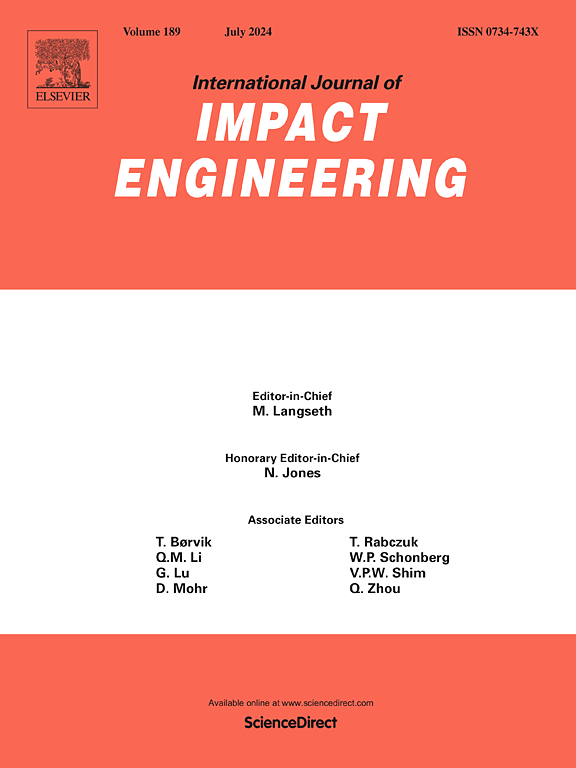Effects of chemical strengthening, strain rate and stress wave on the flexural properties of aluminosilicate glass
IF 5.1
2区 工程技术
Q1 ENGINEERING, MECHANICAL
International Journal of Impact Engineering
Pub Date : 2024-12-25
DOI:10.1016/j.ijimpeng.2024.105214
引用次数: 0
Abstract
Plate-like glass structures, such as vehicle windshields and building windows, can experience dynamic failure under impact during service. In this article, the flexural properties of annealed and chemically strengthened aluminosilicate glass were investigated. A series of quasi-static, dynamic uniaxial unidirectional and dynamic uniaxial bidirectional tests were conducted on semi-circular bending specimens. The failure characteristics of specimens were observed using a high-speed photographic system and a scanning electron microscope. The effects of chemical strengthening, strain rate and stress wave on the flexural properties were analyzed. The test results indicated that chemical strengthening and strain rate have significant influence on the flexural properties. The relationship between flexural strength, strain rate and chemical strengthening was predicted using an empirical formula. In contrast, the dynamic flexural properties of specimens do not depend on the number of uniaxial stress waves. Specimens can achieve load balance more quickly in bidirectional tests compared to unidirectional loading, enabling acquisition of more valuable data of brittle specimens such as glass.
求助全文
约1分钟内获得全文
求助全文
来源期刊

International Journal of Impact Engineering
工程技术-工程:机械
CiteScore
8.70
自引率
13.70%
发文量
241
审稿时长
52 days
期刊介绍:
The International Journal of Impact Engineering, established in 1983 publishes original research findings related to the response of structures, components and materials subjected to impact, blast and high-rate loading. Areas relevant to the journal encompass the following general topics and those associated with them:
-Behaviour and failure of structures and materials under impact and blast loading
-Systems for protection and absorption of impact and blast loading
-Terminal ballistics
-Dynamic behaviour and failure of materials including plasticity and fracture
-Stress waves
-Structural crashworthiness
-High-rate mechanical and forming processes
-Impact, blast and high-rate loading/measurement techniques and their applications
 求助内容:
求助内容: 应助结果提醒方式:
应助结果提醒方式:


